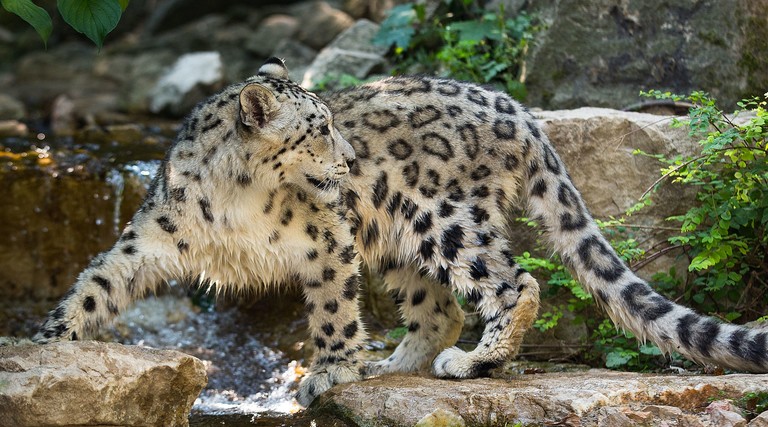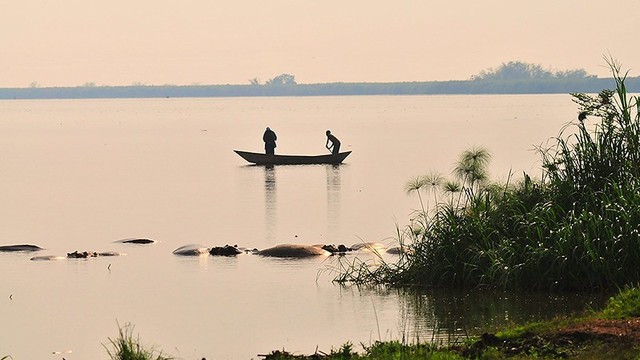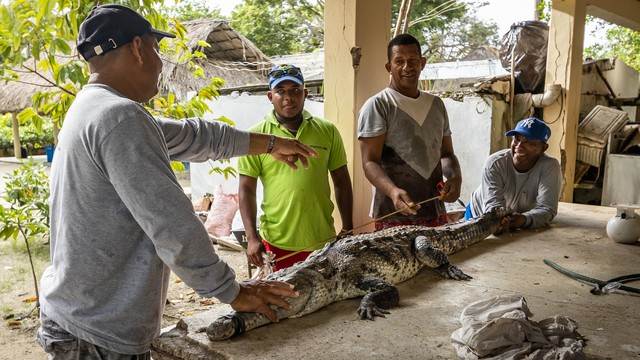Q&A: answering your questions on community-based approaches to tackling poaching and illegal wildlife trade
Following last week’s webinar on community-based approaches to tackling poaching and illegal wildlife trade, the panellists address five key questions raised by attendees.
The webinar explored how communities are tackling poaching and illegal wildlife trade (IWT) and focused on responses to human-wildlife conflict, covering theory and case studies relating to reducing conflict between communities and wildlife in the context of tackling poaching and IWT.
For those who missed the live webinar, the recording is available below and on IIED's YouTube channel.
A lively and thought-provoking Q&A session followed the webinar but – with 230 participants! – not all of the questions were able to be addressed. Here, the webinar’s chair, Francesca Booker puts some of the session’s biggest questions to panellists and presenters including Amy Dickman (AD), the director of the Ruaha Carnivore Project; IIED senior associate Holly Dublin (HD); and IIED principal researcher Dilys Roe (DR).
We hope you enjoy reading. If you have any of further questions, please do add these in the comments section below.
FB: During the webinar, you all shared really great examples of community-based approaches. How long does it typically take to establish such initiatives, especially the initial consultation during the design?
HD: It can take years and years to really engage communities effectively in tackling poaching and IWT. But, like all aspects of conservation, it has to begin somewhere. And that beginning has got to be with the communities – it’s so important to build trust, transparency and collective and collaborative ideas for action right from the start.
The First Line of Defence (FLoD) methodology provides a really useful process for initiating this engagement and ensuring community representatives get a clear voice. A key feature of the tool is that it can be modified to fit the local context. Do check out the methodology and tool, and keep an eye out for our soon-to-be-launched FLoD training modules, available on the FLoD website. Get in contact if you need any guidance.
FB: How can we get donors to buy into and support the process of community engagement during project design?
HD: Support for international policy and legislation is well advanced – take a look at some of the international commitments to communities from London, Kasane and Hanoi IWT conferences.
But more needs to be done. We need to see more donors insisting on community engagement from the very start of project/programme design. This is crucial if we are to achieve lasting outcomes and impacts. We’ve been encouraging donors to build the FLoD methodology into their project funding as an integral part of the process.
Another key challenge is that donor support can shift with changing politics, which can affect available funding. Plus, donor funding is typically timebound. Four-year project cycles, for example, are common and this is a challenge: to achieve outcomes (such as behaviour change) and impacts (such as changes in the state of species in trade or improvements to local people’s wellbeing) communities-based initiatives need dedicated time over the long term.
FB: What do you recommend for communities who want to work with NGOs to build community-led initiatives but have historically been disempowered by externally-led conservation initiatives? How can these communities build from a place of disempowerment?
AD: The most effective conservation initiatives involve partnerships between local communities and external stakeholders – at least initially. That’s because external stakeholders, like NGOs, often have the most experience in obtaining the funding and publicity needed.
Of course, local people might be hesitant to partner with conservation NGOs if they have negative past experiences. But, not all of us who care about conservation are the same! Many of us genuinely care about people’s wellbeing, and we work for improving people’s lives as well as caring about wildlife.
Many external partners, including NGOs, are willing to work hard to build trust and form constructive relationships so the communities have an instrumental role in a partnership and have the power to build their resilience and self-reliance. There are many examples of this – the Equator Initiative highlights some great community-led initiatives.
FB. Many examples you shared during the webinar were specific to certain locations. How can successful community-based approaches be expanded and scaled up to other regions?
DR: At IIED, we’ve been working hard to capture case studies of community-based approaches on the PeopleNotPoaching database, and we’ve specifically sought to focus on lessons learned about why initiatives do – or don’t – work.
It’s really important, and empowering, for communities and NGOs to learn from each other. In some cases, this can spark entirely new ideas and opportunities. That’s why we’re building the PeopleNotPoaching community of practice, to share these lessons and maximise the opportunities for scaling up impact and replicating success.

Among the case studies on the PeoplenotPoaching database are three focusing on how to protect snow leopards and support local livelihoods (Cloudtail the Snow Leopard, via Flickr, CC BY-NC-ND 2.0)
But, it is important to underline – and we all know this from decades of community conservation – that context matters and there is no one-size-fits-all approach. We can’t simply import a model that has worked in one place and expect it to work elsewhere. It’ll need adapting to the local context, and a good way to do this is to listen and work with local people.
FB: Another interesting question raised by many webinar attendees related to financial sustainability. How can community-based initiatives supported by external donors become financially sustainable in the longer term?
DR: Reliance on external donors is inherently unsustainable. As Holly pointed out, it’s not possible to predict when political interests might change, and many donors are only interested in funding projects for short cycles. What’s needed though is long-term support for up to 10 years. This is critical for sustainability.
But we also need to recognise that the questions of finance don't depend only on external donors – there are other factors that are beyond the control of communities. Take tourism for example. The current COVID-19 outbreak has caused a global shutdown in the tourism industry and community initiatives reliant on tourism income are being hit hard. And global tourism is affected by other external factors such as economic downturns and perceptions of risk about terrorism or political instability.
We need new models for financing conservation that are less exposed to donor whims and external shocks and crises. Community initiatives need funding from a diverse range of sources, so the removal of one doesn’t lead to the total collapse of a valuable community-based initiative. Our recent analysis of incentives for community-based conservation for the Luc Hoffmann Institute explores this issue in more detail.
See the presentations
The presentations from the webinar are available on IIED's SlideShare channel as follows:
- First line of defence in tackling illegal wildlife crime, by Holly Dublin
- People not Poaching: community-based approaches to tackling illegal wildlife trade, by Olivia Wilson-Holt
- Communities, cats and camera-traps: reducing human-carnivore conflict in Tanzania's Ruaha landscape, by Amy Dickman
More information
- Find out more about the First Line of Defence (FLoD) methodology and associated guidance on the FLoD website
- Check out the case studies of community-based approaches to tackling poaching and IWT on PeoplenotPoaching, and share your case studies (email Olivia.WilsonHolt@iied.org if you need help)
- Follow PeoplenotPoaching on Twitter via @CommunitiesIWT
Contact
Francesca Booker (francesca.booker@iied.org), researcher (biodiversity), IIED's Natural Resources research group



